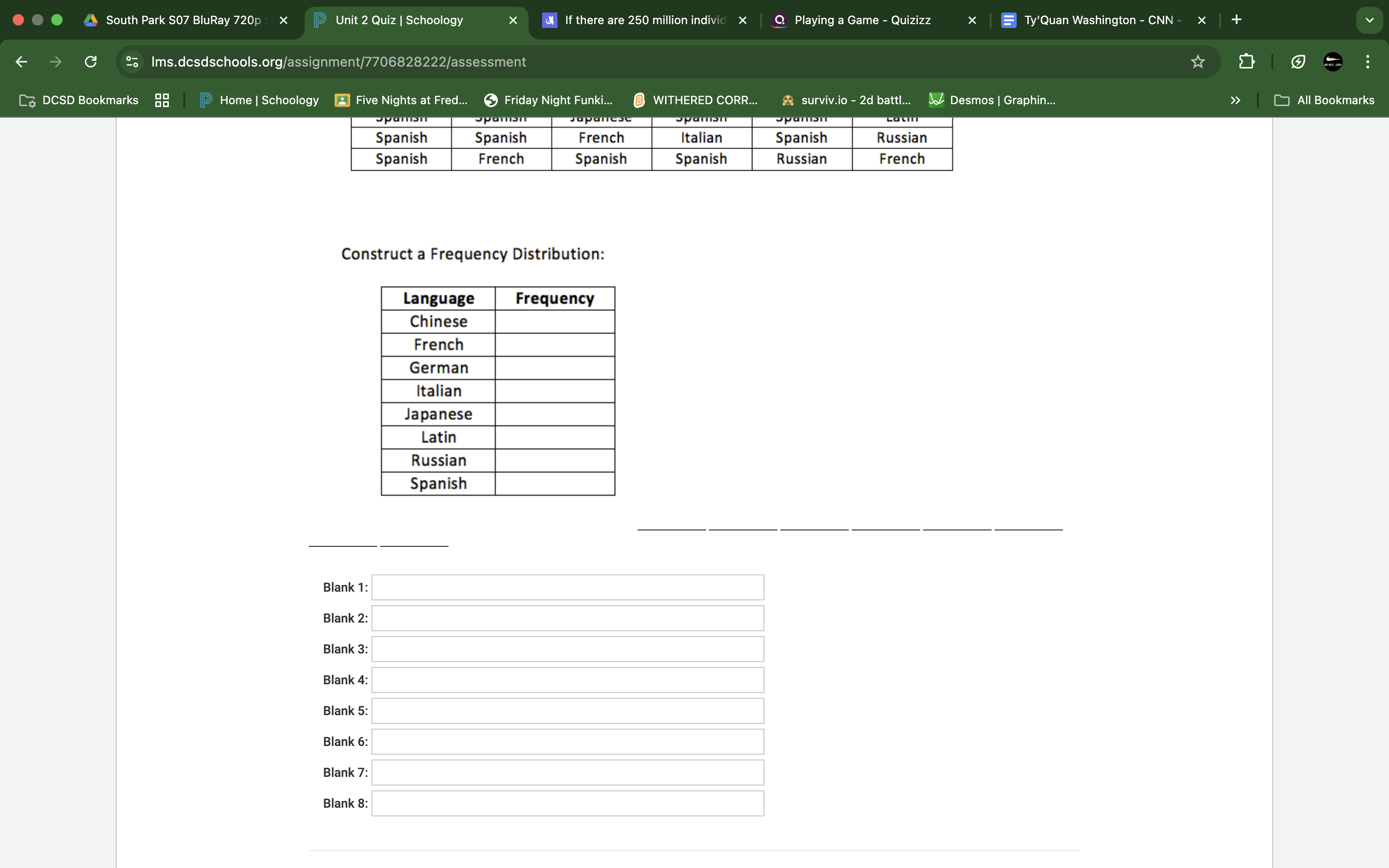Construct a frequency distribution based on the given language data.

Understand the Problem
The question is asking to construct a frequency distribution table based on the provided data about languages and their occurrences. It requires determining how many times each language is mentioned and filling in the frequencies in the appropriate blanks.
Answer
- Blank 1: 0 - Blank 2: 3 - Blank 3: 0 - Blank 4: 1 - Blank 5: 1 - Blank 6: 1 - Blank 7: 2 - Blank 8: 8
Answer for screen readers
- Blank 1: 0 (Chinese)
- Blank 2: 3 (French)
- Blank 3: 0 (German)
- Blank 4: 1 (Italian)
- Blank 5: 1 (Japanese)
- Blank 6: 1 (Latin)
- Blank 7: 2 (Russian)
- Blank 8: 8 (Spanish)
Steps to Solve
- List out the data We gather all the occurrences of each language from the provided data:
- Spanish: 8 times
- French: 3 times
- Russian: 2 times
- Japanese: 1 time
- Italian: 1 time
- Latin: 1 time
- Chinese: 0 times (not present in the data)
- German: 0 times (not present in the data)
- Count the frequency of each language Next, we count how many times each language is listed:
- Spanish: 8
- French: 3
- Russian: 2
- Japanese: 1
- Italian: 1
- Latin: 1
- Chinese: 0
- German: 0
- Fill in the frequency distribution table Now we place the counted frequencies into the frequency distribution table:
| Language | Frequency |
|---|---|
| Chinese | 0 |
| French | 3 |
| German | 0 |
| Italian | 1 |
| Japanese | 1 |
| Latin | 1 |
| Russian | 2 |
| Spanish | 8 |
- Complete the blanks Fill in the blanks for the frequencies from the table above.
- Blank 1: 0 (Chinese)
- Blank 2: 3 (French)
- Blank 3: 0 (German)
- Blank 4: 1 (Italian)
- Blank 5: 1 (Japanese)
- Blank 6: 1 (Latin)
- Blank 7: 2 (Russian)
- Blank 8: 8 (Spanish)
More Information
Frequency distribution helps summarize how often each language appears in the dataset. It’s a useful way to visualize the data and can assist in identifying trends or preferences among languages.
Tips
- Forgetting to count correctly: Ensure all instances of each language are counted accurately.
- Not checking for languages not listed: Remember to note any languages that do not appear and record their frequency as zero.
AI-generated content may contain errors. Please verify critical information